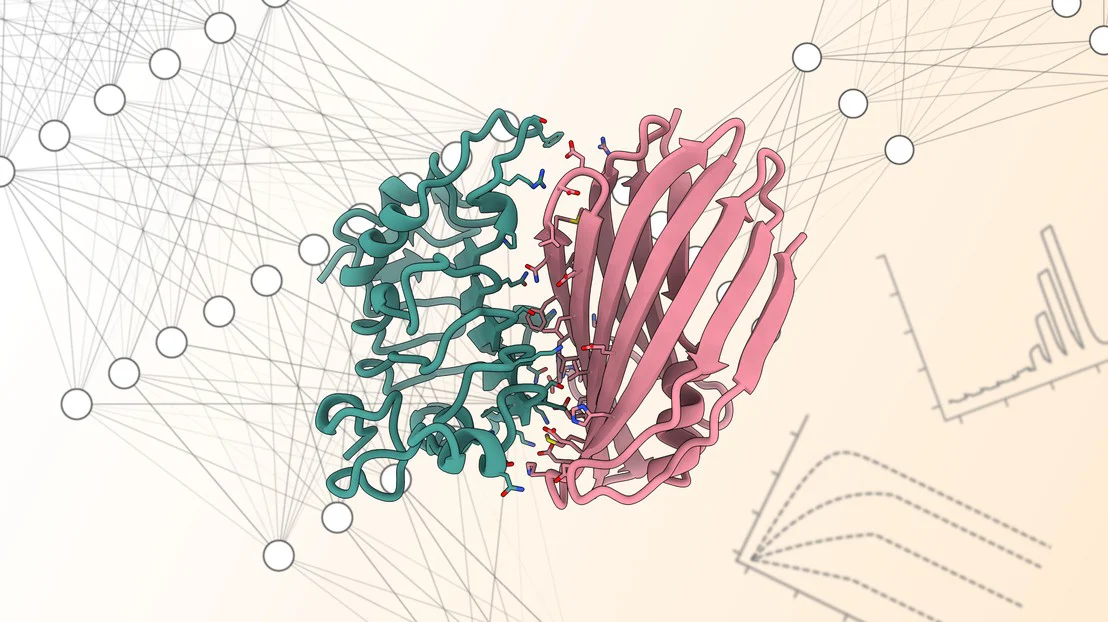Since its release last year, the open-source platform BindCraft, developed at EPFL, has already disrupted the world of protein design.

Physical interactions between proteins influence anything from cell signaling and growth to immune responses, so the ability to control these interactions is of great interest to biologists. Researchers have used neural networks to help develop new proteins called binders that are designed to attach to therapeutically relevant targets, in the same way our immune systems use antibodies to bind to pathogens. But these systems, which use deep learning to predict protein shapes from sequences of amino acid building blocks, require computer science expertise.
“Traditional binder discovery methods involve screening tens of thousands of protein candidates, which requires experimental capabilities and computational expertise that not every lab can afford or has,” says Lennart Nickel, a PhD student in the Laboratory of Protein Design and Immunoengineering (LPDI), led by Bruno Correia, in EPFL’s School of Engineering. “BindCraft grew out of a desire to develop a more accessible, user-friendly tool that would only need to test a handful of proteins to get a binder.”
“With BindCraft, we essentially reverse-engineer the current pipeline by using the protein structure prediction network right from the start to generate novel binders that have the properties we’re looking for.“
– LPDI PhD student Christian Schellhaas
Instead of feeding amino acid sequences into a neural network and painstakingly screening the resulting binders for a good fit, the EPFL team, in collaboration with scientists at MIT, used structures fed into Google DeepMind’s AlphaFold2 system to generate sequences for new binders based on a set of desired functional properties – like binding to a specific target.
Reverse-engineering
“With BindCraft, we essentially reverse-engineer the current pipeline by using the protein structure prediction network right from the start to generate novel binders that have the properties we’re looking for,” explains PhD student Christian Schellhaas.
By focusing on a small number of binder designs, rather than high-throughput screening of vast libraries of candidates, BindCraft makes protein design more efficient as well as more democratized. The team has recently published their results in Nature, in collaboration with researchers across Switzerland, in the US, and in the Netherlands.
Targeting quality over quantity
For their study, the team validated binders designed to interact with a dozen biotechnological and therapeutic molecules, including AAVs (adeno-associated viruses), which are used to deliver therapeutic genes into target cells; the CRISPR-Cas9 nuclease, which is used in gene editing applications; and certain common allergens. Overall, experiments showed that the team’s binders attached to their intended targets with an average success rate of 46%, offering the possibility of greater therapeutic control.
“For AAVs, the idea is to use these new binders to enable gene delivery only to specific cells and tissues while minimizing the risk of potential side effects. In the case of CRISPR-Cas9, our binders can stop its gene editing activity and keep it from acting when and where it shouldn’t,” explains first author and LPDI scientist Martin Pacesa.
Since the initial publication of BindCraft as a preprint last fall, the platform has already seen swift and enthusiastic uptake by the biology community, sparking requests from users for modifications and additional functionalities.
“We were surprised by how quickly our tool has been adopted – it is even already being used in industry. The requests from users are a great inspiration to continue developing our method. We are already working on adapting BindCraft for smaller therapeutically relevant molecules like peptides,” Pacesa says.
References
Pacesa, M., Nickel, L., Schellhaas, C. et al. One-shot design of functional protein binders with BindCraft. Nature (2025). https://doi.org/10.1038/s41586-025-09429-6